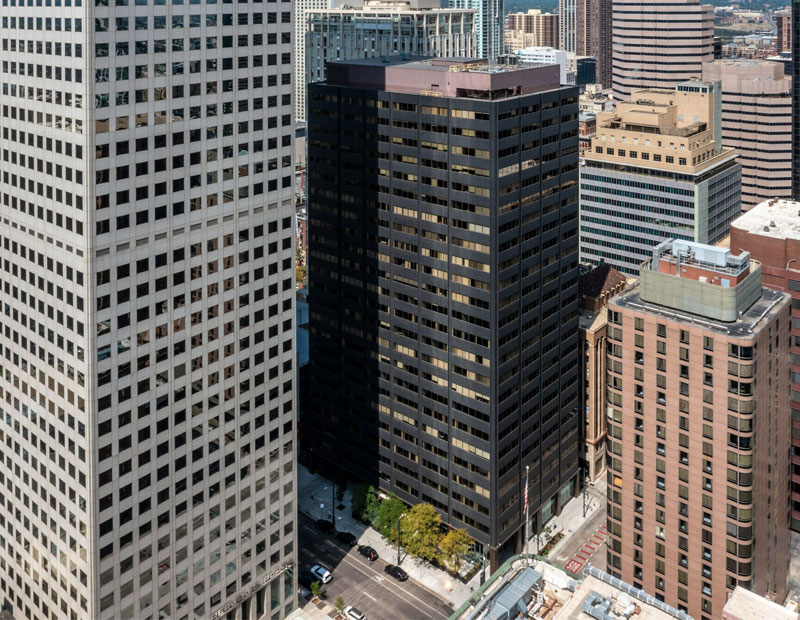The Effect of Wall Street Jitters on CRE
Should commercial property investors worry about Wall Street’s jitters?
By Hugh F. Kelly, PhD, CRE
 In The Intelligent Investor, his classic primer on value investing, Benjamin Graham recounts how J.P. Morgan famously responded when asked for a prognostication about the stock market. “It will fluctuate,” Mr. Morgan observed.
In The Intelligent Investor, his classic primer on value investing, Benjamin Graham recounts how J.P. Morgan famously responded when asked for a prognostication about the stock market. “It will fluctuate,” Mr. Morgan observed.
On Wall Street, the most widely followed measure of volatility is the VIX, the so-called “fear index.” The gyrations of world stock markets during January, triggered by the related issues of plummeting commodities prices and the economic slowdown in China and emerging markets, pushed the VIX to 27.59 on Jan. 20, up from 14.67 last Dec. 1. At this writing in early February, the VIX registered 22.20. Most observers agree that equity investors are a jittery bunch in the early going this year.
Some perspective is in order here, however. Last summer, the VIX topped 40, and it hit 42 in August 2011. At the onset of the global financial crisis in September 2008, the VIX soared to 60, an unmistakable signal of panic in the markets.
Why worry about this? Some critics are seizing on the stock market correction to validate their Fed-bashing. Once quantitative easing is withdrawn and interest rates are permitted to rise from near zero, the argument goes, an asset bubble will deflate disastrously, pent-up inflation will explode, and real estate will slide down the sluice in a repeat of 2008. Notable voices in this chorus include David Stockman, Nouriel Roubini and William Ackman.
Let’s look closely at two key elements of these concerns: The potential for Wall Street’s jitters to trigger a recession on Main Street, and the vulnerability of commercial property to a repeat of the catastrophe nearly a decade ago.
Sober mood
John Kenneth Galbraith described financial euphoria as a heady mixture of excess leverage, speculative fever and investor amnesia. It’s fair to say that the mood at the grassroots level is more sober than euphoric. Since 2011, U.S. households have expanded their debt 1.8 percent annually on average, a fraction of the 10.4 percent yearly pace that they registered from 2003 to 2007 during the run-up to the recession. The savings component of the U.S. money supply (rather inelegantly termed “Non-M1 M2”) decelerated precipitously between 2003 and 2007. It has been rising about 5 percent annually since 2011, and the rate of increase has been remarkably steady for the past two years. The slow climb out of the Great Recession is still very much on the mind in most households, notwithstanding steady job growth since early 2012. Home prices may have largely recovered, but the homeownership rate is down from nearly 70 percent to just 64 percent.
For those who live their lives according to the performance of the Big Board, such observations may be of puzzling relevance. But stock market corrections don’t necessarily, or even predictably, translate into economic downcycles. As Paul Samuelson trenchantly noted, “The stock market has predicted nine of the last five recessions.”
A more serious concern is the potential for disruption if emerging markets—many dependent upon commodity exports—trigger a credit crisis that blows back on U.S. lenders. If so, Wall Street’s flu could again send Main Street to the infirmary. This is not the “most probable” scenario, but the vocabulary of The Black Swan is now part of the general discourse. That’s probably a good thing, since it means that amnesia about disruptive risks has not settled in, either on Wall Street or Main Street.
Leveling out
So what does this mean for commercial property? I wouldn’t be surprised to see the growth rate for transaction volume decelerate this year. That doesn’t mean a capital contraction, but it does mean a reduction in pricing frothiness. Practically speaking, it should lead to a leveling out or a modest uptick in going-in capitalization rates as well as a more significant rise in the anticipated terminal cap rates used in cash-flow analysis. For the investor, this will reflect a preference for current cash flow over expected appreciation. That make a lot of sense, given where the real estate cycle stands at this point.
If that preference for current cash over speculative appreciation is consistent across asset classes, that is actually advantageous for income-producing real estate. As investors turn to a more “risk-off” stance in an uncertain period, contractually based cash flow from well-underwritten real estate compares favorably to low-dividend, price-volatile stock equities. A key condition, of course, is contained in the first word of this paragraph: “If.” Here’s what I am watching as a sign of the overall appetite for investment risk, and particularly the risk that a bubble may burst soon.
In its weekly Money Supply report (H.6), the Federal Reserve publishes an important addendum that tracks money held in Institutional Money Market Funds (IMMF). This is essentially highly risk-averse capital seeking a safe harbor in troubled times. During the dot-com bubble in the late 1990s, the IMMF series increased 140 percent. From 2005 through the 2008-2009 meltdown, the IMMF series jumped 114 percent to $2.46 trillion. By 2011, however, this reservoir of risk-averse capital had declined to $1.762 trillion, and it has been remarkably stable ever since. By Jan. 18, the Fed reported IMMF supply at $1.721 trillion.
This tells me that we are not seeing the flight to safety typical of panicked disruptions in the capital markets. The recession scenario that is being bruited about by those focused on the recent increases in VIX levels foresees capital panic as a key element triggering a broader economic contraction. Until I see evidence of substantial increases in “risk-off” capital flows, such as those reflected in the IMMF series, I am inclined to think the consensus forecast of another year of moderate gains for the U.S. economy is more on target than the projections of the pessimists. Dispassion, in other words, should trump the potential for economic disruption in 2016.
Hugh F. Kelly, PhD, CRE, is a clinical professor of real estate with the NYU Schack Institute of Real Estate and was the 2014 chair of the Counselors of Real Estate.







You must be logged in to post a comment.